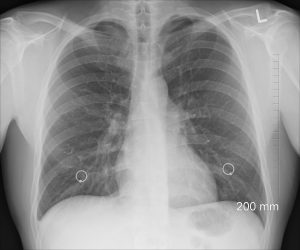This National Sarcoidosis Awareness Month, we want to shed light on this little-understood inflammatory disease. Sarcoidosis remains difficult to diagnose, with limited treatment options and no known cure. It most commonly affects the lungs and lymph glands, and eventually, the inflammation will change the normal structure and possibly the function of all of the affected organs. But how do you know if you have sarcoidosis, and what will it mean for your body if you do?
What Is Sarcoidosis?

It’s estimated that between 150,000 and 200,000 people in the U.S. have sarcoidosis, and around 1.2 million individuals are living with it worldwide. Sarcoidosis is an inflammatory disease that is characterized by the formation of granuloma, or tiny clumps of inflammatory cells, on one or more organs in the body. When a person’s immune system goes into overdrive, and too much cell clumping happens, it interferes with how the organ functions. If sarcoidosis is left unchecked, chronic inflammation can lead to fibrosis, or permanent scarring of the organ tissue. It will affect the lungs in about 90% of cases. For some, the disease will go away on its own, while for others it can progress in life-altering ways.
Symptoms & Causes
Researchers believe that sarcoidosis is caused by an abnormal immune response. The latest research indicates that sarcoidosis could be caused by a genetic susceptibility to the disease.
The disease affects more African-Americans in the country than it does any other ethnicity. For Caucasians, the disease appears suddenly, which means it tends to be milder in this group, while African-Americans and Latinos tend to develop a more long-term and severe form of sarcoidosis.
Sudden onset of general symptoms, such as weight loss, fatigue, fever, or just an overall feeling of ill health, usually means that the course of sarcoidosis will be relatively short and mild in severity. Shortness of breath and some types of skin involvement mean that sarcoidosis will be more long-lasting and severe: the disease is considered chronic in people for whom the disease remains active for more than 2 to 5 years.
Common symptoms of sarcoidosis include:
- Shortness of breath
- Wheezing
- Chronic cough
- Fatigue
- Irregular heartbeat
- Swollen legs
- Headaches
- Joint pain
- Vision problems
- Red eyes
- Weakness or numbness of an arm, leg, or part of the face
- Blurry vision
- Arthritis
Diagnosis & Testing
Around a third of people diagnosed with sarcoidosis will require long-term treatment. Common tests used to diagnose sarcoidosis include:
- Chest X-ray– This allows your doctor to completely see your lungs and airways. More than 90% of people with sarcoidosis will have abnormal X-rays.
- CT scans– A certain type of CT scan that requires a special diet will help show things more clearly to your doctor. During a CT scan, you will be asked to hold your breath so the machine can take pictures of your muscles, bones, and lungs.
- Lung function test- Your doctor will have you breathe into a mouthpiece that is attached to a spirometer, which is a device that measures the amount and speed of air that you blow out.
- Lung biopsy– After conducting X-rays and lung function tests, your doctor might take a sample of lung tissue for testing.
- Blood test– Your doctor might give you a blood test to check for an excess amount of vitamin D and/or a chemical called angiotensin-converting enzyme.
- Heart rhythm monitoring– Your doctor might use an electrocardiograph to get information on the function of your heart. Around 50% of people with sarcoidosis will have an abnormal EKG.
Managing Sarcoidosis
There is no cure for sarcoidosis, but the disease can get better on its own over time. In some cases, you will need medication to relieve symptoms and reduce inflammation of the affected tissue. Corticosteroids can help control disease, and if you cannot tolerate steroids, there are other medications available.
You can also make some lifestyle changes to help manage the disease, such as:
- Eating a well-balanced diet with fresh fruits and vegetables
- Getting 6 to 8 hours of sleep each night
- Quitting smoking
- Drinking 8 to 10 8-oz glasses of water each day
- Getting regular checkups with your doctor
- Avoiding excessive amounts of calcium-rich foods, such as dairy products and oranges.
- Avoiding excessive amounts of vitamin D in sunlight
In addition, being insured will give you peace of mind, and the coverage you need to make sure you can see your doctor regularly, and get any treatments you might need. If you’re looking for an insurance plan, EZ can help: we offer a wide range of health insurance plans from top-rated insurance companies in every state. And because we work with so many companies and can offer all of the plans available in your area, we can find you a plan that saves you a lot of money – even hundreds of dollars – even if you don’t qualify for a subsidy. There is no obligation, or hassle, just free quotes on all available plans in your area. To get free instant quotes for plans that cover your current doctors, simply enter your zip code in the bar on the side, or to speak to a licensed agent, call 888-753-7207.